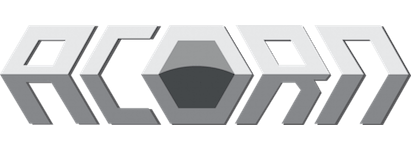
"Inventory is fundamentally evil. You want to manage it like you're in the dairy business … if it gets past its freshness date, you have a problem" — Tim Cook, Apple CEO
This is what we hear a lot before our clients get introduced to vendor managed inventory …
"We've had to throw stock away, it's past use-by date now, with degrading seals."
"We ordered buffer stock for this component, but have lost track of it in our warehouse and can't find it anymore."
"The production line has moved on to a different section of the build, as the components for this section haven't all been delivered for assembly together."
Having a production line where components are delivered at the right time, in the right way for smooth assembly, build and install directly from stores and warehousing seems like the bare minimum operating procedure for a modern manufacturing facility.
But … highly complex assemblies have a myriad of moving parts to oversee and coordinate, and so it is not surprisingly a difficult dance to master. It is a dance though that OEMs need to be fluent in for the best ROI and business competitiveness.
By handing off the management of inventory to an expert supply chain partner, clients can focus on core OEM activities, leaving warehousing and component logistics to be improved as a focussed, specialised service.
This is a simple definition of what vendor managed inventory is, but what can it do?
Examples of why VMI is valuable for an OEM
Inventory management outsourcing companies can cut supply chain costs across multiple areas, and are able to reduce the storage space of an entire supply chain by 30%. The VMI warehouse is typically significantly more efficient than in-house storage because it is the core competency and key focus of the VMI vending expert.
Acorn has found that OEMs consistently overstock and order sub-optimal quantities of components in a bid to 'make life easier'. This often results in wastage from mis-organised stock, obsolete or expired items. Full VMI integration can result in 3x increase in inventory turnaround so stock is used in a timely, efficient manner, with a 5% reduction in stockholding.
Typically OEMs are manufacturing complex, high-value items and procuring a myriad of components from a global network of suppliers can be difficult to coordinate and optimise. A VMI partner has an optimised supplier network and has typically cultivated a massive line of items (at Acorn we have over 31,000 components). By leveraging this a 25% inventory and lead time reduction can be had.
While reducing the layers in the supply chain, management, communications and operations for the OEM, a VMI partner focusses on procurement and delivery of SKUs and inventory at the right time to abstract this away from the client, making the process simpler.
Vendor managed inventory: the advantages and disadvantages of VMI
Let's outline the clear advantages of utilising VMI:
— improved inventory quality, with decreased wastage and obsolete stock as inventory is better managed, with more efficient order quantities, delivery timings, and correct usage. — managerial effort can be focussed on core competency of design and manufacture of high value, highly complex product. — supplier partnerships are closer and harmonised, with a more strategic plan of delivery rather than tactical, last minute firefighting and provision of urgent stock shortages. — administrative costs can be minimised for coordinating warehousing, BOM and procurement, with coordination through your VMI partner. — more effective management of inventory also means lower overall inventory costs, with less capital locked up in inefficient volume, over-ordering, buffer stocks and excess storage. — less deliveries, coordinated supply of components, and less procurement volume with harmonised BOM (bill of materials) and purchase orders aids sustainability, reduces workload. — smaller factory footprint, where production area can be utilised for high value assembly rather than inefficient stores and additional warehousing overheads. Offload this area to a specialised logistics outfit. — reliable, effective delivery is a hallmark of VMI provision, as an ad hoc network of supply and informal delivery timings can be replaced by coordinated supply management and timely delivery schedules. — minimise or eliminate stock-outs and line-downs, as you have better visibility of demand and supply volumes, better agency of inventory also allows better demand planning, along with a clearer idea of full supply chain conditions and when to upgrade or reduce safety/buffer levels.
We must also acknowledge some of the disadvantages to be aware of:
— trust in a VMI logistics partner has to be earned, and work needs to be put in to both empower them and make sure they are accountable and can deliver what is promised and expected. — starting small obscures the big picture, if you hand over a smaller component selection to test them and 'bed them in', be aware that this mitigation of risk can also cloud the bigger wins and advantages of VMI and moving to fuller inventory management. — the procurement side of your organisation may feel disempowered, but VMI can actually free them to deal with higher value and more complex supply issues and concentrate of bringing more value with higher cost assembly materials that may require more research and negotiation. — integration into inventory, warehousing and procurement systems needs to be carefully planned and switched over. Don't rush this process and work with your VMI partner on the best method, such as private portal or EDI. — stakeholder buy-in, requires factory floor to management to integrate, accept and utilise the new system to achieve the full benefits of the service.
Without a doubt, many of these disadvantages can be mitigated against, and they are more like cautionary items to be aware of in the process rather than showstoppers. In terms of the advantages, these can only be fully unlocked with deeper commitment to the VMI service. It means building trust and a robust plan with your logistics outsourcing partner.
How to implement VMI
At Acorn we have a simple process abstracted to how we envision our VMI implementation:
— Understand partner, stock and production line needs — Select VMI provider — Organise and count inventory — Set initial order quantities — Gather inventory data — Store inventory data — Run replenishment system — Set up order creation, analyse for efficiencies
You can check a full graphic of our VMI process here.
What company wouldn't like to streamline processes, reduce inventory costs, minimise supply risks, and reduce total SKU count?
We have a proven process, that critical UK manufacturers rely on. If you're looking for an inventory management outsourcing company then please learn more about our vendor inventory management on our vendor managed inventory services page.
Last Updated on September 20, 2023.
Check if VMI is the right solution for you
Acorn specialise in solving logistics headaches, and improving the supply chain logistics for OEMs. Some of the UK's top critical manufacturers rely on us to supply them. Learn more about how a managed inventory system can help you with your production.










